Today’s blog post is a Panasonic bread maker review as I share how I make fresh bread everyday. I know, I know. I didn’t think I’d be this person either! No one is more surprised than I am that I make a fresh loaf of bread most days.
We bought our Panasonic bread maker two years ago. I was hesitant about getting a bread maker as it seemed like another expensive kitchen gadget that would clutter up our cupboards once the novelty wore off.
I asked the lovely people of Instagram what they thought and it was a 50/50 split. Some people said they loved their bread makers and used them daily, while other people agreed that they rarely used it once the initial excitement was gone.
It was Sam who was the driving force behind the decision to get a bread maker and, would you believe, he’s the one who grew bored of it and hasn’t used it in over a year!
For me however, I LOVE it. It isn’t perfect but I wouldn’t be without it and I’m so happy we bought it.
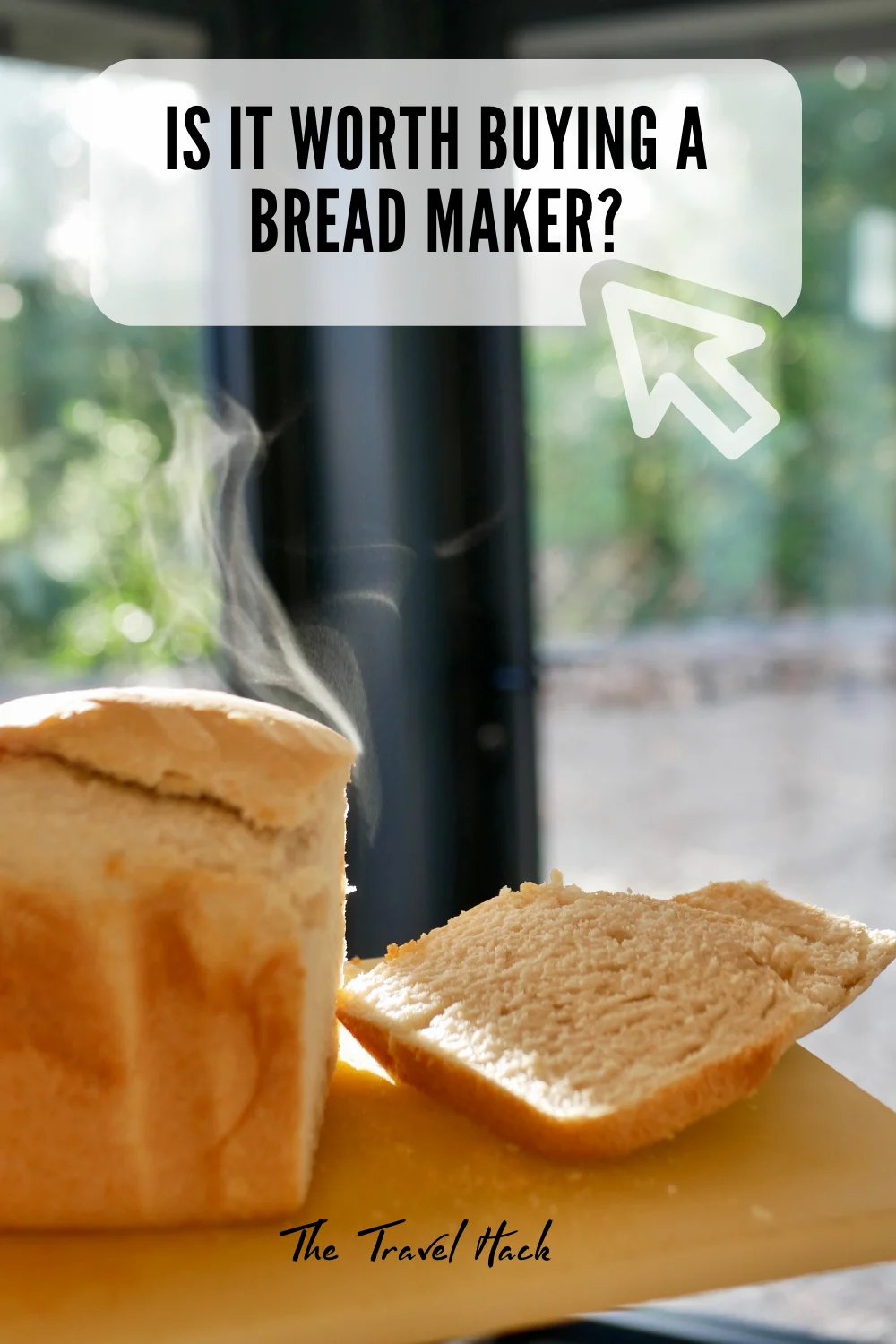
The Panasonic SD-ZB2512KXC
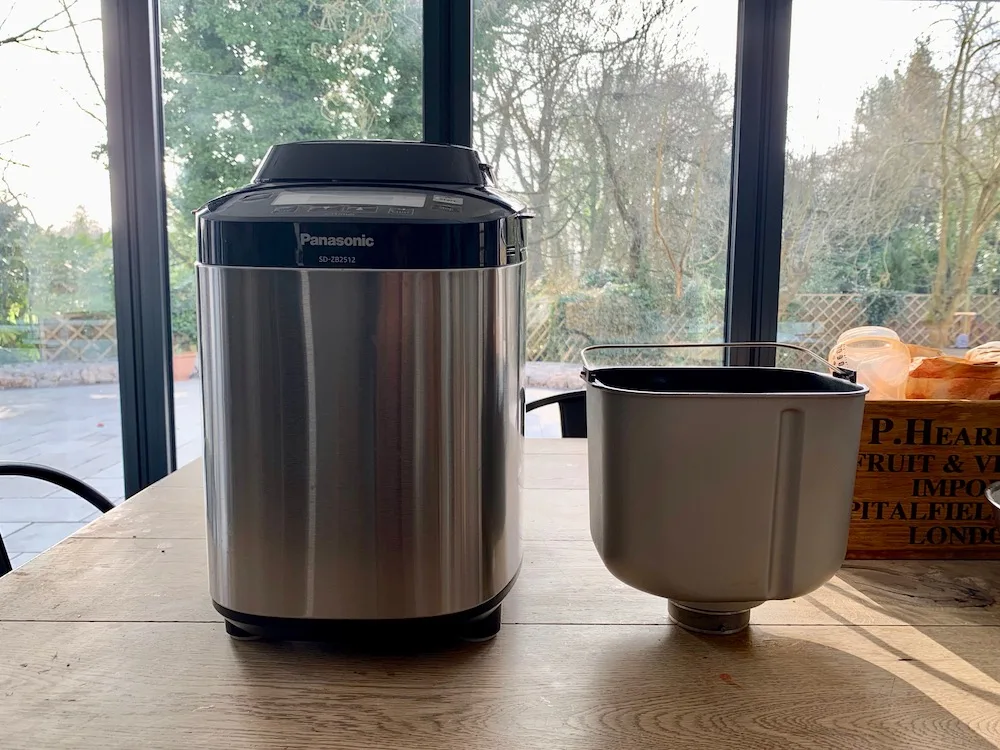
I really don’t know why Panasonic don’t give their breadmakers catchier names!
We opted for a Panasonic bread maker. After reading online reviews we saw that other brands of bread makers could be unreliable and broke quickly. To be honest, so can Panasonic bread makers (as you’ll see from my review below) so we bought ours in store from John Lewis as they’re always great when it comes to returns and fixing faulty items. Amazon are good with returns too but I like the ease of being able to drop it off at John Lewis rather than arranging packaging and delivery.
I’ve linked to it here on Amazon where it is £30 cheaper than John Lewis. I think John Lewis will price match but it’s interesting to look at all the reviews on Amazon (currently over 2,000 reviews and 89% are 5*)
The more up-to-date version of our Panasonic bread maker is still very similar but has a horizontal design. This is a much better design as it fits on the kitchen worktop and can be neatly pressed against the wall when not in use!
Other than the new horizontal design, it looks almost exactly the same to the one I have.
- DUAL TEMPERATURE SENSORS: This breadmaker comes equipped with two built-in sensors to determine both internal and external temperatures to optimise each programme at every step, giving you the best...
- ARTISAN-STYLE KNEADING: This automatic breadmaker features an innovative kneading blade with specially placed ribs in the bread pan to replicate artisan kneading and serve you the best-tasting bread...
- FULLY AUTOMATIC: This breadmaker has both yeast and raisin/nut dispensers, which automatically add the ingredients at the right time, giving you consistently tasty bread with less work.
The size
The bread maker is much bigger than I thought it would be so this is definitely something to consider when buying one. We initially kept it out on the worktop but it’s not the prettiest kitchen appliance so I reshuffled our kitchen cupboards and made space for it in a cupboard. This works for us but it’s a big appliance to store away each day. The ideal place for it would be a utility room if you have one!
The bread maker is so easy to use
- You just add your ingredients to the basin which then sits inside the bread maker.
- You add your yeast separately into the top and the machine dispenses it slowly at the perfect time.
- Select the size you’re making
- Select how crusty you’d like your loaf to be
- Press start or select timed delay (perfect for setting the night before and waking up to fresh bread!)
- A medium sized loaf takes 4 hours from start to finish
- I usually set it to just make the dough (2 hours 20 minutes) and then I leave it to prove and put it into my own tins (more on this below!)
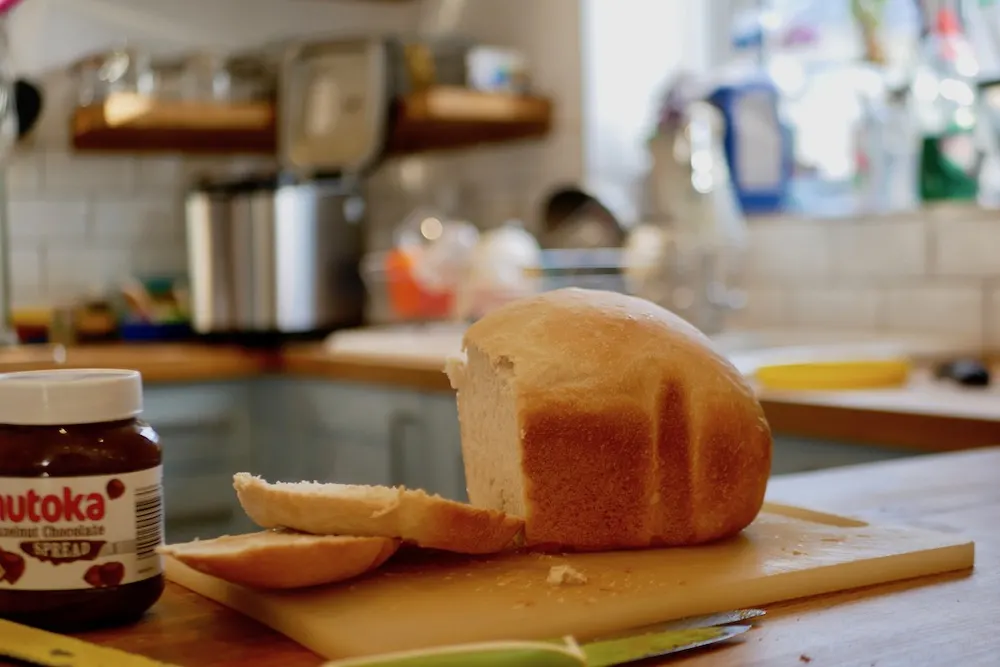
Our bread maker bread recipe
The Panasonic SD-ZB2512 bread maker came with an instruction booklet with loads of recipes. We still use the ‘basic bread’ recipe from the book.
For a medium loaf we add:
- 400g strong white bread flour
- 1 x teaspoon sugar
- 1 x teaspoon salt
- 15g unsalted butter (vegan butter works fine too)
- 280ml water
- ¾ teaspoon of yeast
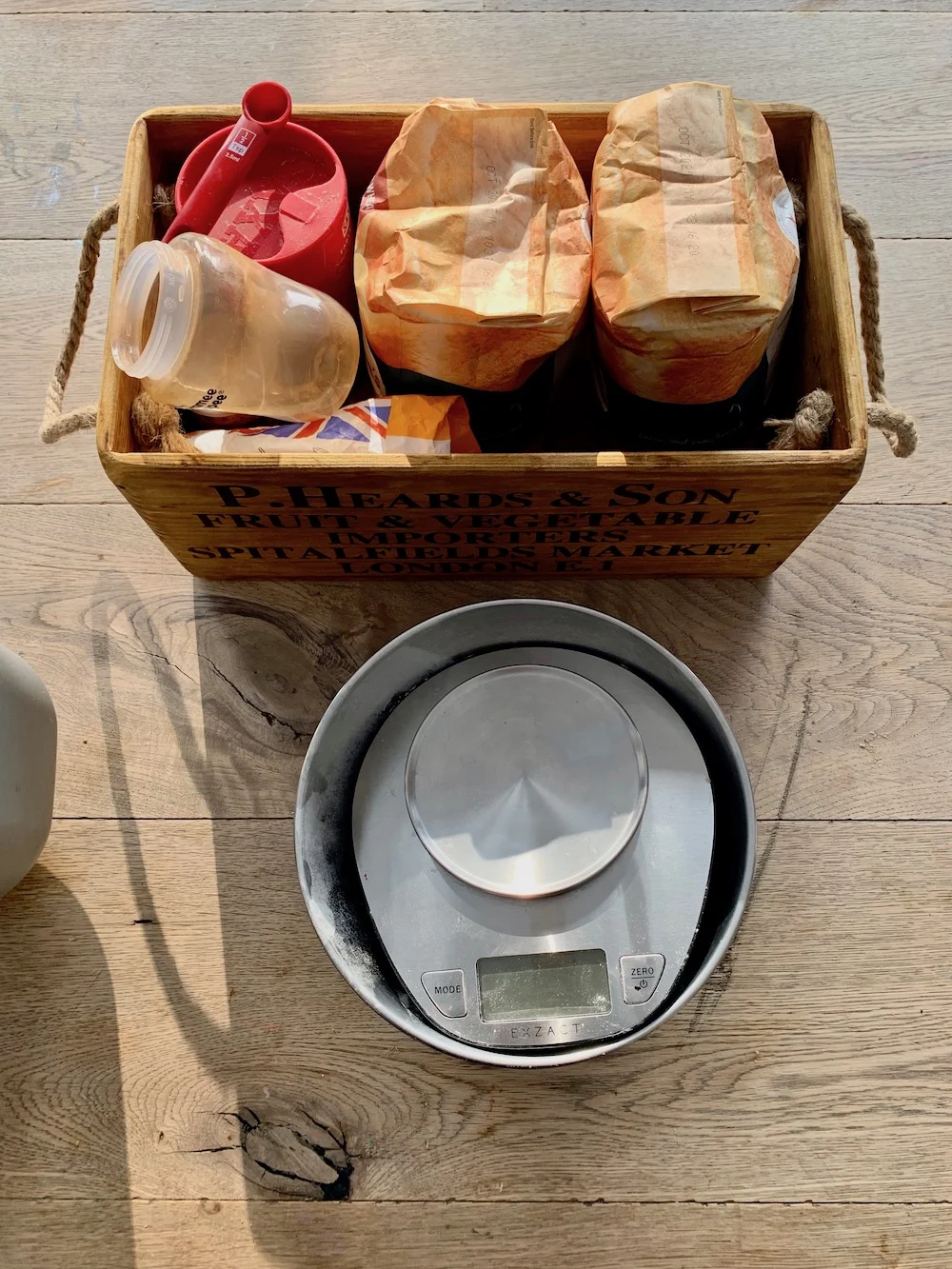
Mama Hack Tip
If you’ve got a baby, it’s worth noting that 280ml is the exact size of a Tommee Tippee bottle! I don’t think you need to be really precise with your ingredients measurements but if you’ve got a bottle kicking around the house then it’s worth keeping as a really easy way to measure your water!
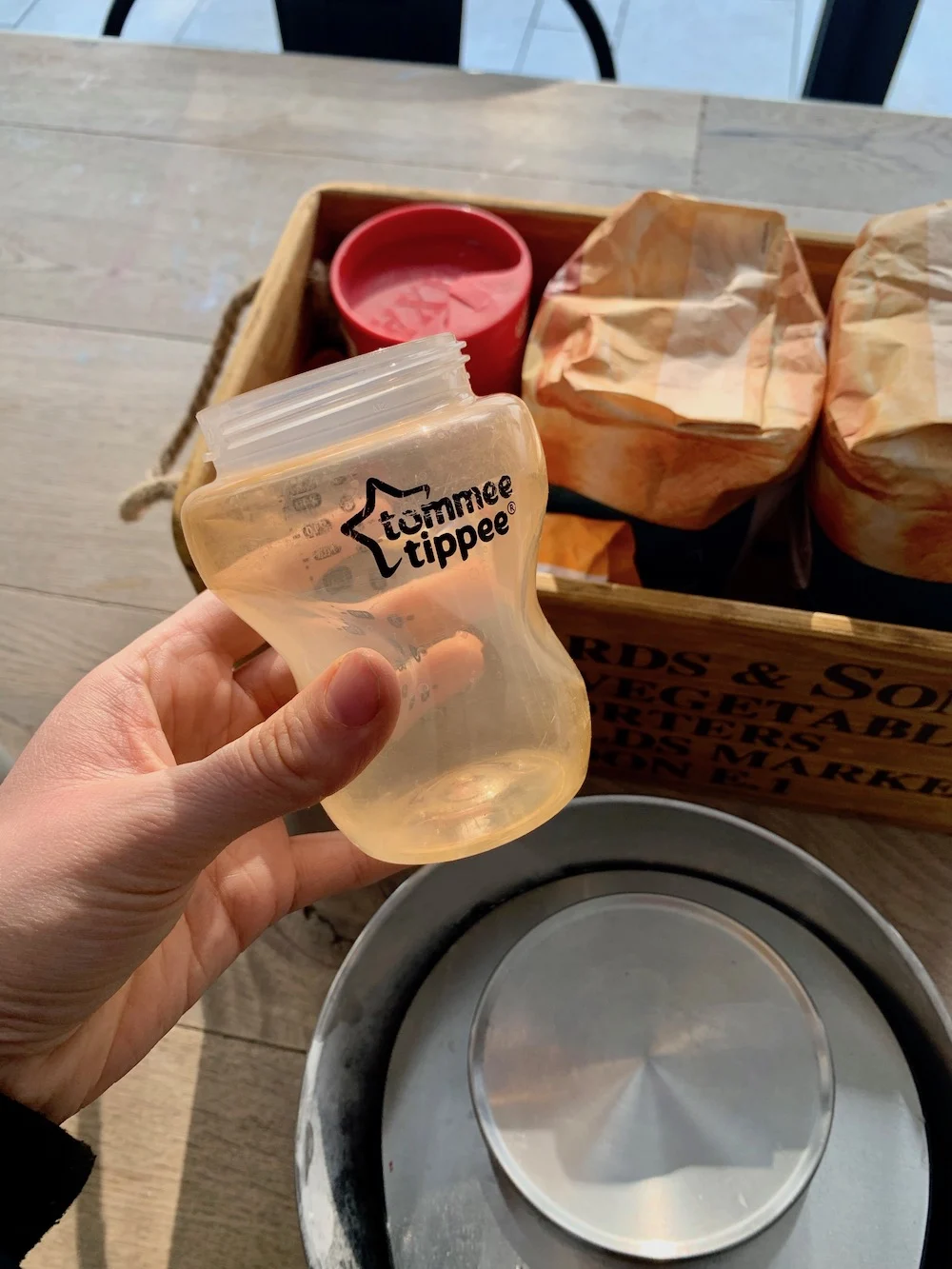
Tips to speed up using the Panasonic Bread Maker
As you can see, using a bread maker is so quick and easy but I do have an extra tip to make it even faster.
I recommend keeping all your bread making ingredients together in a box with your scales. It just speeds things up when it’s all together. I used to keep my ingredients in different cupboards around the kitchen – salt with my spices and sugar with my tea and coffee and flour with my baking supplies and my measuring spoon, well God only knew where my measuring spoon was! Now it’s all together it feels like even less of a faff.
Using your bread maker to just make dough
This is something I often do because I like to make two mini loaves of bread (and also because I think my bread maker is faulty – more on that below).
I make my dough in the bread maker but I don’t leave it in to rise and bake. My bread maker has a setting to just make dough and I assume most bread makers will be the same.
I then remove it and cut the dough in half and place it into two small loaf tins.
I place a plastic bag over the loaf tins and leave the dough to rise for about 90 minutes before putting it in the oven for about 20-25 minutes.
Having two small loaves suits my family best. I have three young children so plenty of afternoon snacks are a must! I usually make my bread to be ready at about 2pm so it’s ready for my kids when they finish school. We’ll eat one loaf immediately and have the other loaf for breakfast the following morning. Fresh bread doesn’t stay fresh for long so this is a really nice option if you’re not eating all the bread at once.
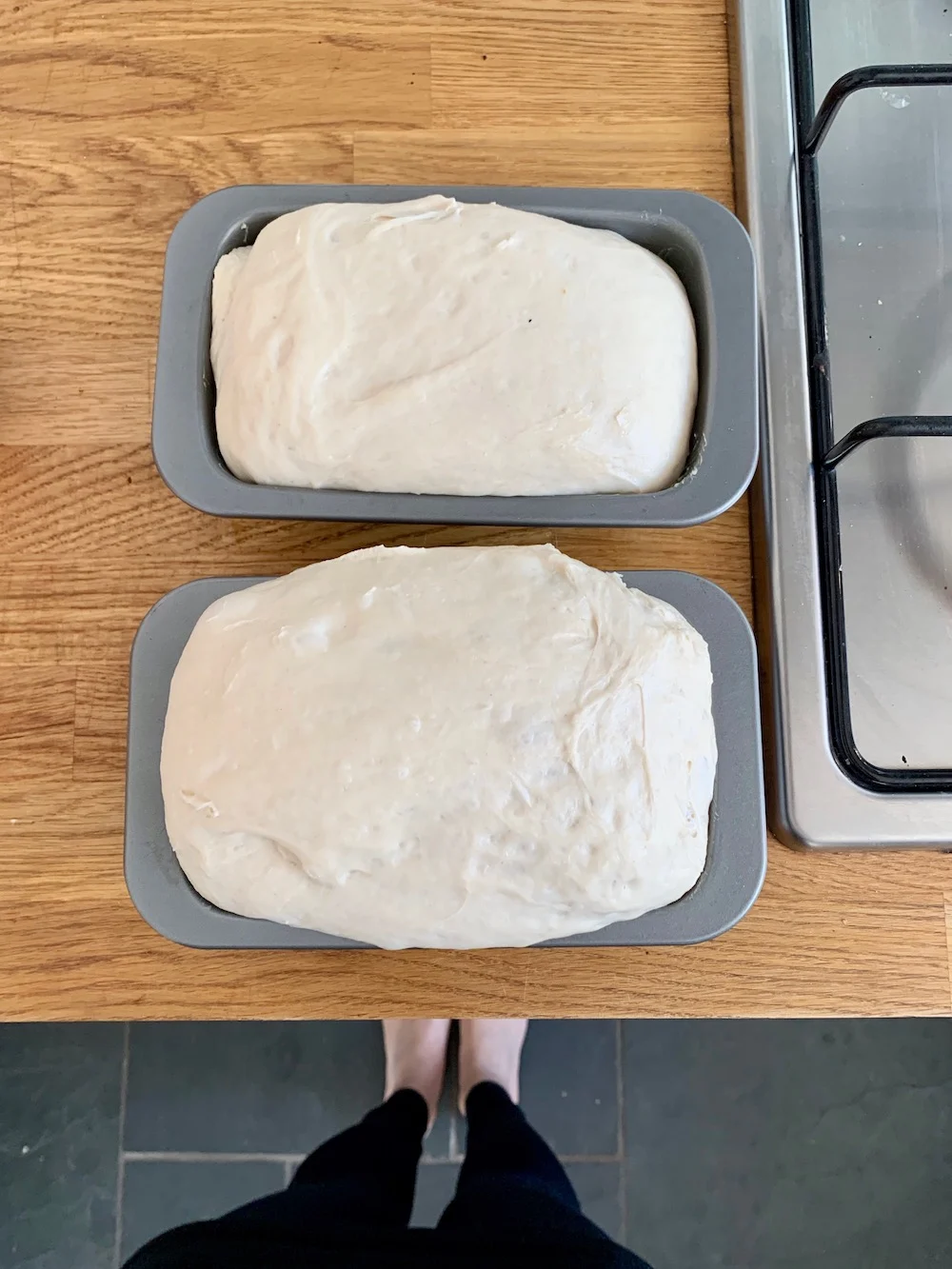
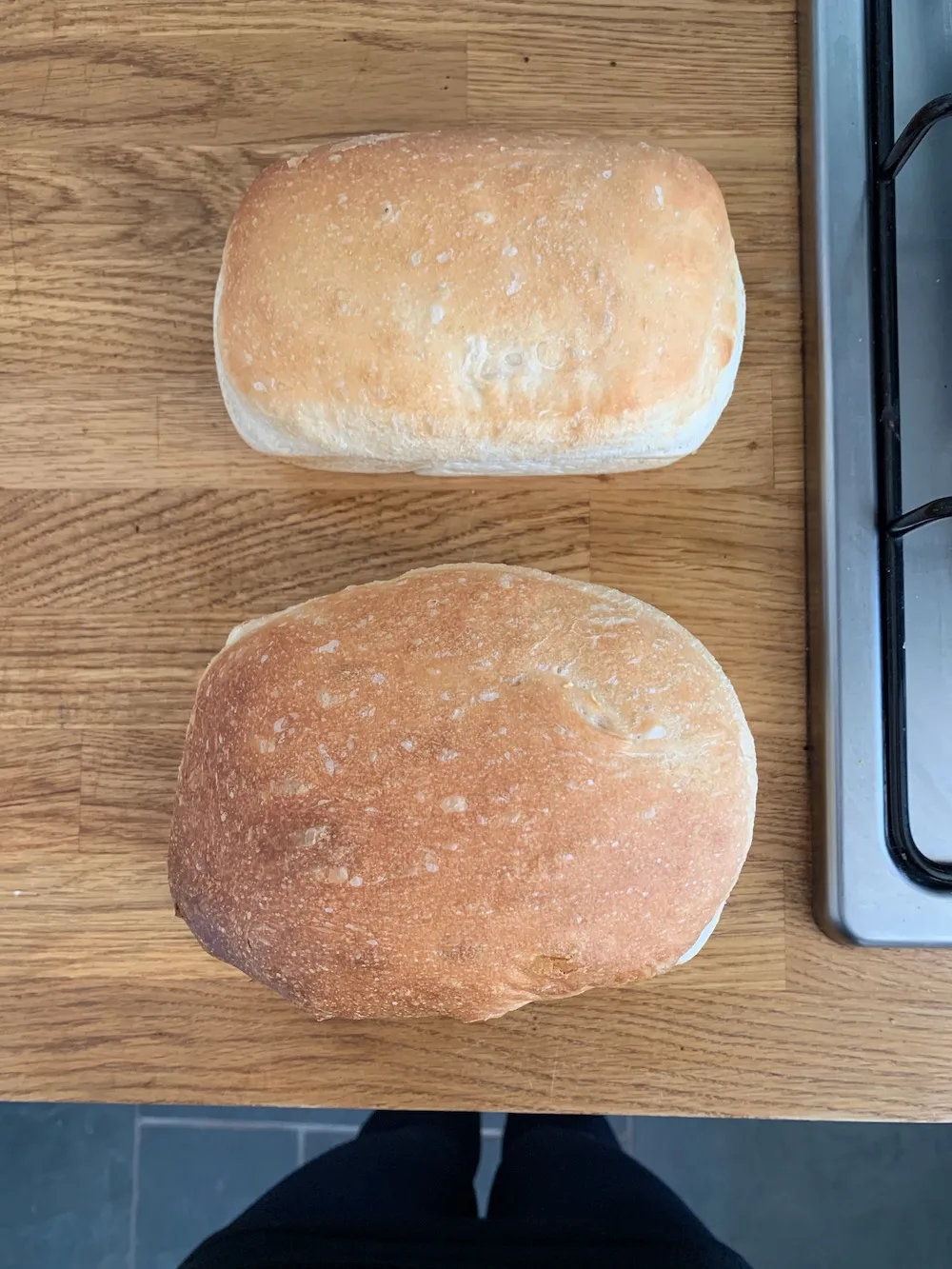
The Panasonic SD-ZB2512 is unpredictable
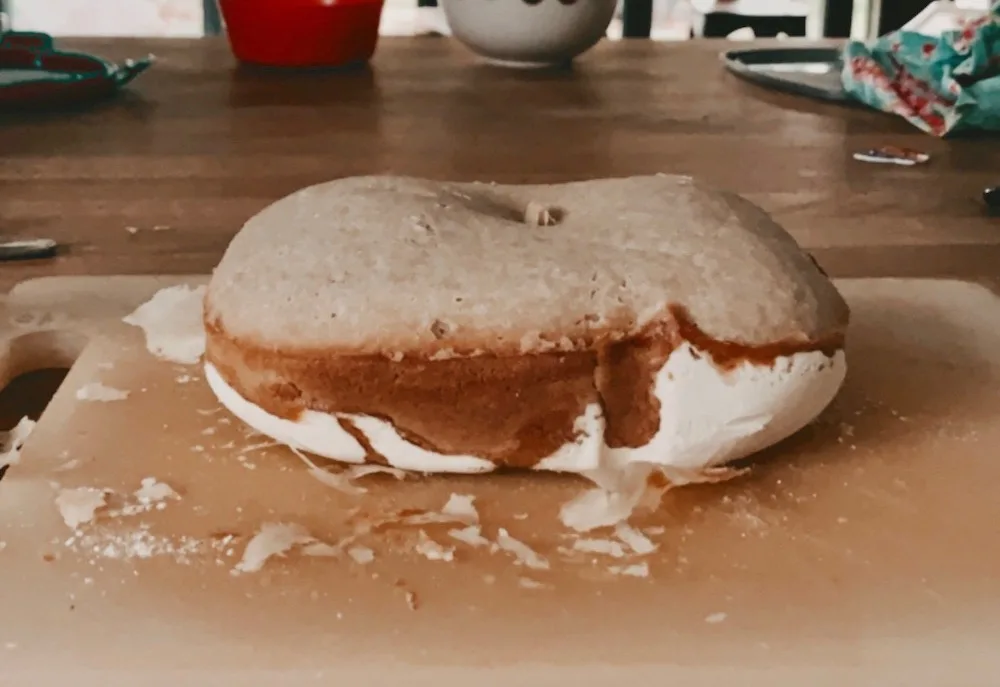
The reason I started using my bread maker to just make the dough was because after about 18 months the bread maker became unpredictable. Some days my bread was perfect and some days it didn’t rise properly and was soggy and undercooked. It was so disappointing to patiently wait for my bread for 4 hours and it would come soggy. I’d say 80% of the time it was perfect, 10% of the time it was fine but a bit too heavy and 10% of the time it was inedible.
I’m pretty sure I could have taken it back to John Lewis but we were in the middle of lockdown at this point and – to be totally honest – I couldn’t be bothered with the hassle.
I tried buying all new ingredients and different brands but 20% of the time it still wasn’t working.
I eventually realised it was to do with the yeast. I was buying a big 100g tin of yeast but it must have been going bad within a couple of weeks. So I switched to small sachets of yeast and I haven’t had a problem since!
You can still bulk buy yeast sachets for a good price and each sachet will last for about 4-5 loaves so that’s perfect as each one lasts about a week.
- Combination of dried yeast with the bread improver ascorbic acid
- Essential ingredient in bread making
- Easy to bake
Using your breadmaker for pizza dough
Yes, you can also make pizza dough in your breadmaker! We’ve actually only done it a couple of times but it was really nice.

What else can you use your bread maker for?
I’ll admit I’ve never tried to use my breadmaker for any of these things but can also use it to make:
Jams and compotes
Some cakes
Sourdough
Rustic doughs
Scones
Ciabatta
Brioche
Spelt bread
Gluten free bread
Fruit loaf
Cheesy breads
And there are loads of dough recipes to make things like croissants, buns, hot cross buns, teacakes, french sticks, pizza, focaccia etc.
Some things to be aware of when using your Panasonic bread maker
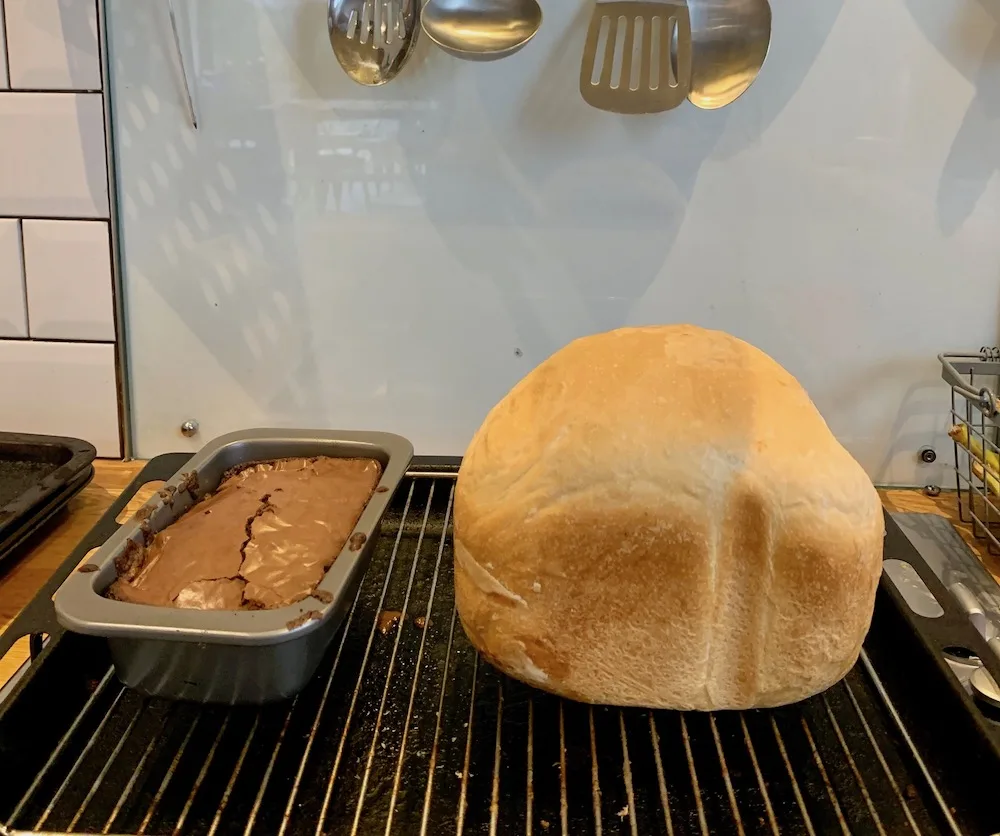
Remove your bread quickly
You really need to remove your bread from the bread maker as quickly as possible when it’s finished. If you leave it in the tin then your loaf will get soggy. It’s best to get it on a wire cooling rack as soon as it’s done. This isn’t a big deal but it does mean you can’t really go out around the time your bread is due to finish.
I’d imagined I’d set my bread to be finished baking at 6am, so it would be cooled and ready to eat by 7am when my family get up in the morning. I tried it once and the bread was cooled but it was also soggy and damp so I won’t be doing that again!
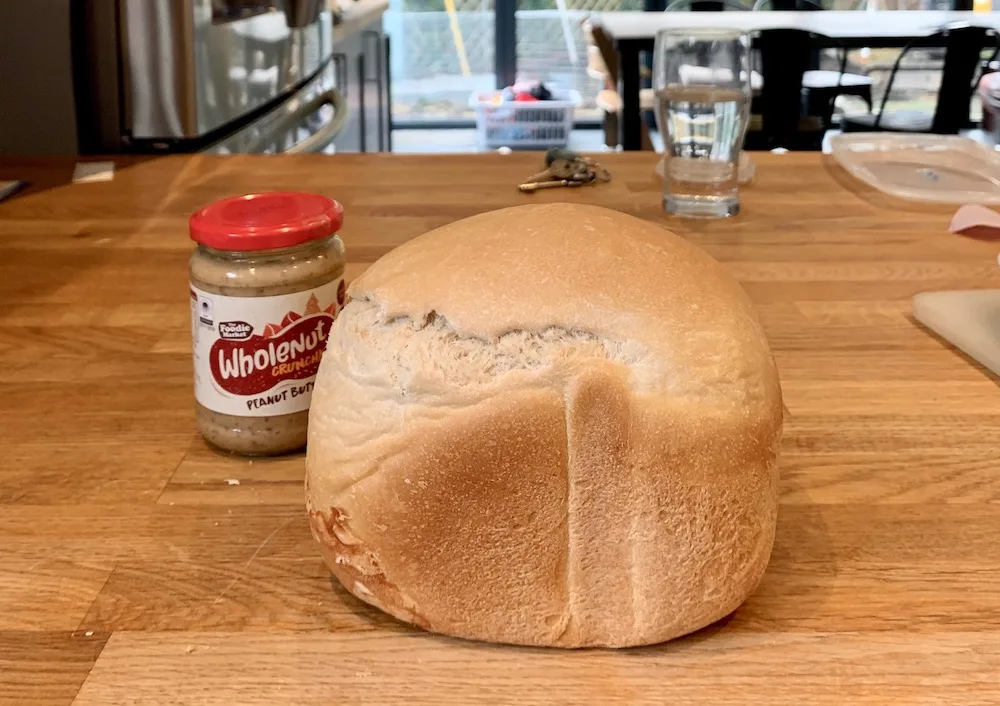
It takes a forceful wiggle to remove it from the tin
It takes a bit of force to get the bread out of the tin. The first time I used the breadmaker I assumed the bread was stuck so I used a knife to prise it from the side of the tin. I ended up scratching the tin and it didn’t remove the bread!
I now find that a good shake works best. It does come out a bit easier when the bread is slightly cooled but if you leave it too long then it’s going to get soggy.
I’m mentioning this because I think someone who is particularly frail might struggle to remove the bread from the tin.
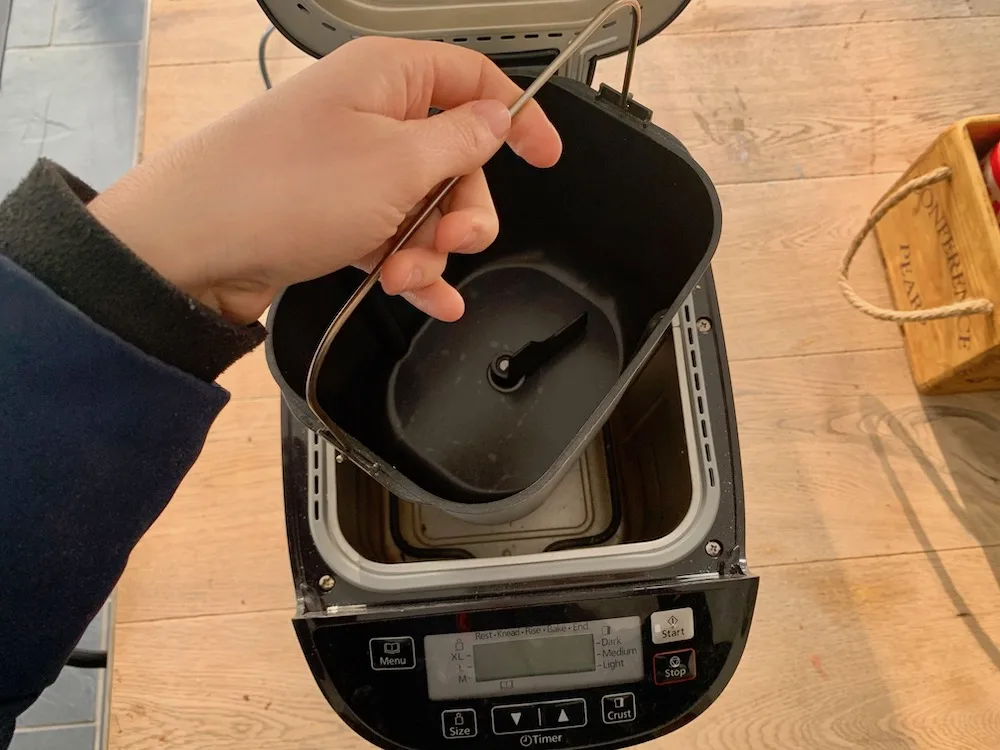
You won’t save loads of money
One thing to be aware of is that using a bread maker isn’t the cheapest way to get your bread. It is slightly cheaper, especially if your breadmaker lasts a long time (but reading online reviews suggests they rarely last more than 3-5 years) but there’s a risk your bread maker won’t last.
- My bread maker cost £200.
- It’s about £1 for a bag of strong white bread flour and this will make about 4 medium sized loaves or about 8 of the mini ones I make.
- Dried yeast costs £1 and lasts ages and ages.
- Salted butter costs about £1.50 and will last about 10 medium loaves
- You need a teaspoon of salt and sugar too.
So it probably costs about £0.40p to make your own bread. Yes, it’s definitely a saving and definitely cheaper than a delicious fresh loaf from your local convenience store.
But if you’re considering buying a breadmaker purely to have the cheapest bread, then you’re probably better off sticking to the supermarket own brand at around £0.50.
I think the bread I make is nicer than the bread from my local co-op and I really like the convenience of not having to go to the shop – especially with three young children during the pandemic!
You can of course buy much cheaper bread makers. There’s a Morphy Richards bread maker for £60 which has great reviews on Amazon!
It makes me feel like Supermum
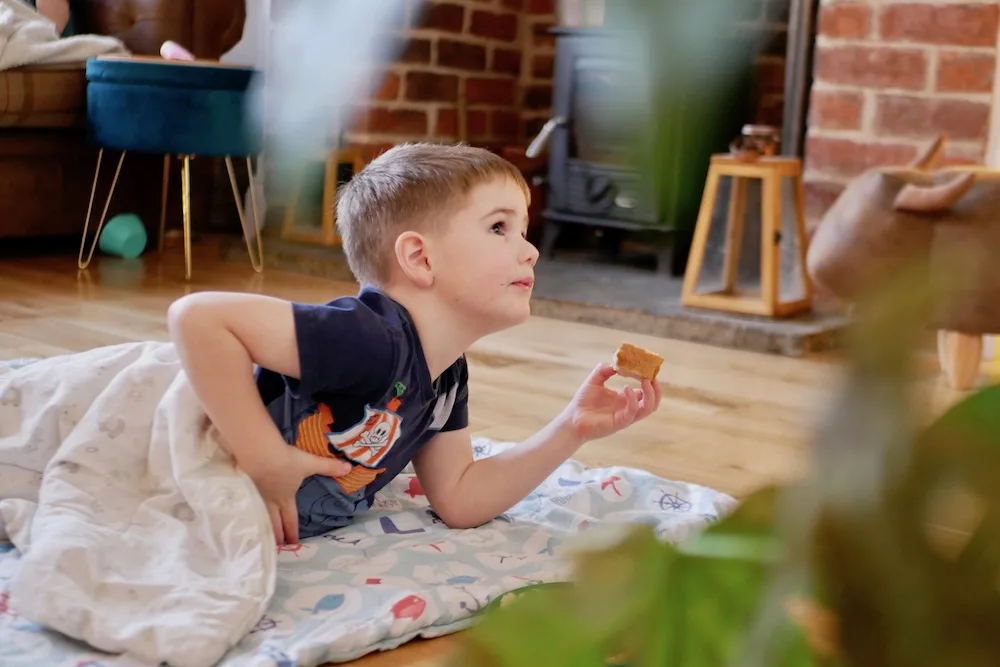
I’m not going to lie, baking fresh bread for when my kids come out of school makes me feel like Supermum. What kid wouldn’t want to come home from school to be greeted by fresh bread slathered in chocolate spread!? It makes a great afternoon snack for the whole family and makes the house smell incredible.
For more information about the bread makers I have mentioned, check out the reviews on Amazon to see what other people have said:
My Panasonic Bread Maker (£169)
Morphy Richards Fast Bake (£59)
- DUAL TEMPERATURE SENSORS: This breadmaker comes equipped with two built-in sensors to determine both internal and external temperatures to optimise each programme at every step, giving you the best...
- ARTISAN-STYLE KNEADING: This automatic breadmaker features an innovative kneading blade with specially placed ribs in the bread pan to replicate artisan kneading and serve you the best-tasting bread...
- FULLY AUTOMATIC: This breadmaker has both yeast and raisin/nut dispensers, which automatically add the ingredients at the right time, giving you consistently tasty bread with less work.

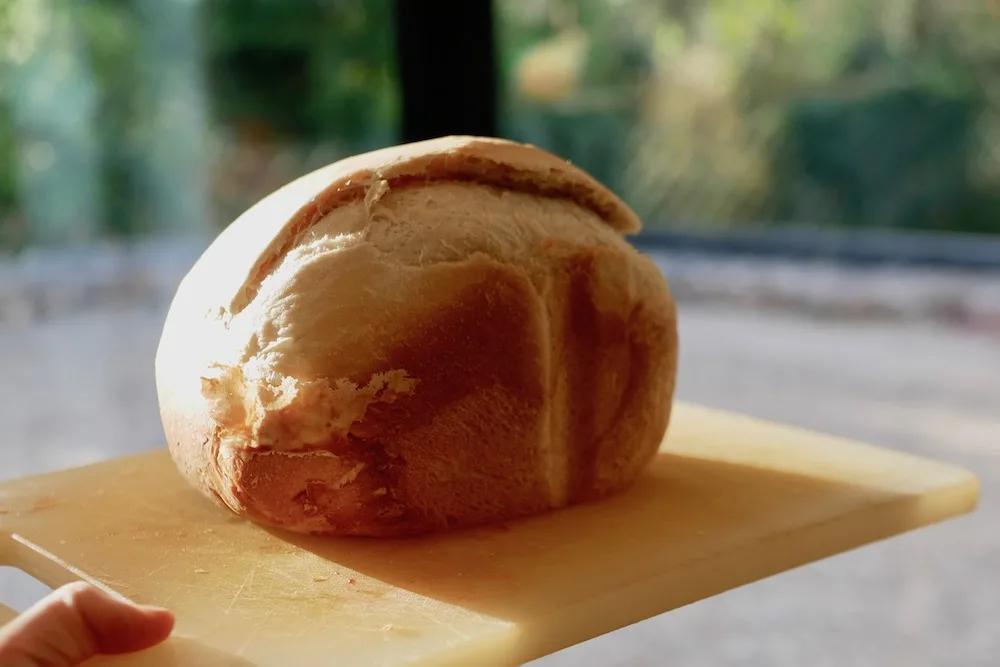


Cherise Munnich
Friday 27th of December 2024
I got a Panasonic Bread maker from my dear friend as a gift for my wedding, which was nearly 20 years ago. It’s still going strong and makes delicious bread, bread roll dough, etc. I’m taking good care of it. I’ve brought it along with me from South Africa, now here, in Australia. Thank you Panasonic!!!
mark
Monday 16th of September 2024
Great Review. (though i guess this was probably before some of the big energy crisis price rises) i know you said you dont think its much of a saving. but its not compairing apples with apples.im goung to make a sourdough bread which wont cost me much more than the cost of of the flour. in M&S a sourdough loaf is £4 and i think between £2 and £4 is your compare point not the cheapest supermarket bread full of chemicals to keep it soft. I mean i esimate you can make a fab fruitloaf for about 90p (aldi strong bread flour and raisins) also you can save by using oil instead of expensive butter and the results are pretty much the same. i have the panasonic too and it just works. i was lucky to get a big box of individual yeast packets super cheap and agree these are much better. Just made a pecan and maple loaf which was fab too. I
Monica
Tuesday 17th of September 2024
Yes I agree, it wouldn't be fair to compare a cheap loaf of bread with a nice, fresh loaf from the bakery. This is definitely more of a bakery loaf! And much more convenient because I don't need to go to the bakery! And that pecan and maple loaf sounds delicious, perfect for autumn.
Marski
Monday 12th of August 2024
I enjoyed reading your blog. I have a Panasonic SD253 bread maker, it was a birthday gift 17 years ago and it's still making good bread. I make 1 loaf every week. It has lasted so long but recently I damaged the paddle when slicing with an electric knife I forgot to take out the paddle. I am thinking of replacing the machine now with another Panasonic.
You are right about the yeast, it needs to be fresh,I keep my yeast tin in the fridge.
A tip about getting the loaf out - I rest my loaf on its side in the tin for about 3 or 4 minutes before tipping it out. During this time I wiggle the paddle a little from the underneath, this usually loosens the bread from the paddle (use an oven mitt as it's very hot) this works 90% of the time.
Happy baking
Stefan
Monday 27th of May 2024
Our Panasonic bread maker is about 25-30 years old, bought it in the 90's and we use it twice a week. I use spelt flour on a longer, 5 hour cycle, the breads are always nice and high, above the rim of the bucket. Recently the shaft in the bucket started playing up, hard to turn. I found the original part online for AU$49, has not arrived yet, but it looks like the bucket stayed the same all these years. Hope we can get more years of use out of it. It was quite expensive back then, around $300 as I remember, but it worked hard all these years as we love bread, including my grandkids now.
Marski
Monday 12th of August 2024
@Stefan, I have found that the spindle the paddle sits on sometimes needs piling. I do this from underneath, just a single drop until you can spin the paddle freely. Hope this helps.
Monica
Tuesday 28th of May 2024
I hope the new part works for you. Sounds like your breadmaker is part of the family now!
Joe
Friday 15th of March 2024
Your recipe does not have sufficient sugar. A 400 gram loaf requires 1 tablespoon of sugar, not a teaspoon. Also keep yeast in fridge once opened and use a yeast improver.
Pete
Monday 8th of April 2024
@Monica, my Panasonic SD253 recipe book does state a tablespoon of sugar for most basic breads. That said, we’re trying to reduce our sugar intake so I use slightly less without any obvious differences to the final result. Interesting that it works with one teaspoon. I’m not sure if it’s supposed to be a sweetener, rather that some sugar is needed for the yeast to feed on, and help to get the process going more quickly. I’ll try with a teaspoon and see what difference it makes to the consistency of the bread.
Monica
Wednesday 20th of March 2024
I've always added 1 teaspoon and it's enough. I think maybe it depends where you live as different countries might have sweeter bread than others? but here in the UK, that 1 teaspoon is definitely enough!